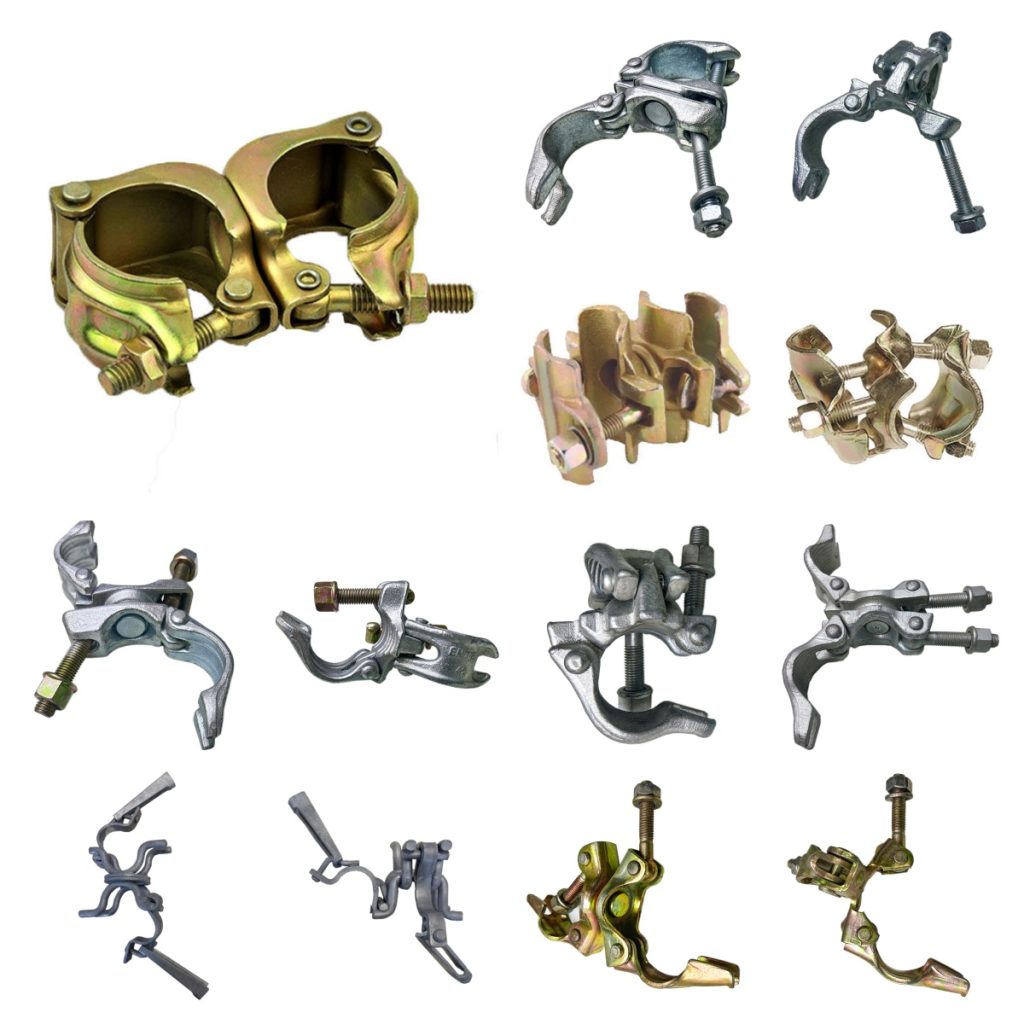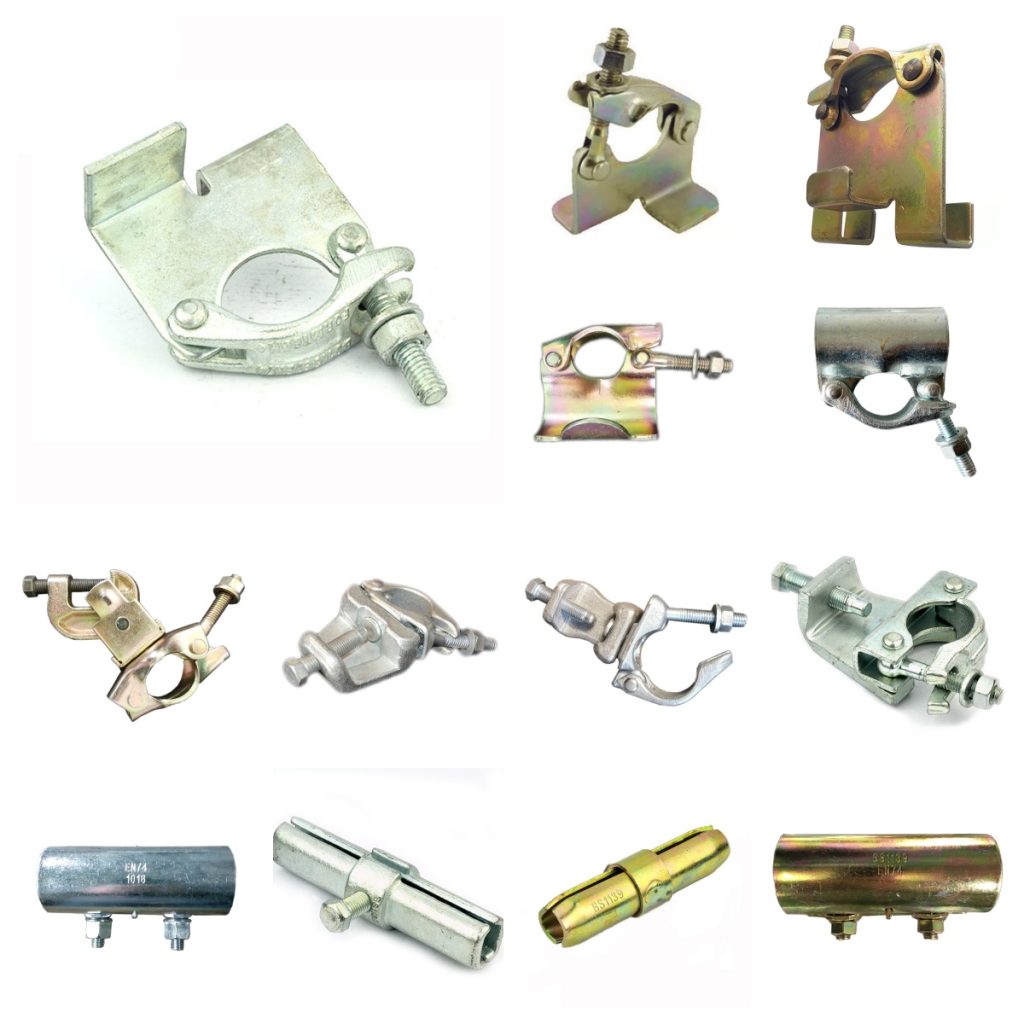Scaffolding coupler are the most important components in a scaffolding system. By using the coupler to secure steel pipes, a stable tube and coupler scaffolding system can be constructed. To create scaffolding systems of various shapes, different types of scaffolding coupler are required. Do you know how many types of scaffolding coupler are currently available on the market?

Scaffolding coupler can be divided into double couplers and single couplers. Double couplers include fixed double couplers and swivel couplers. Fixed coupler, also known as right-angle coupler, only secure ledgers and standard pipes at 90 degrees. Swivel coupler can secure two steel pipes at any angle and are commonly used to secure diagonal braces.
Single couplers come in many varieties, including putlog couplers, sleeve couplers, beam couplers, and brace retaining couplers.
Putlog couplers are used to connect ledgers to standard pipes at right angles.
Sleeve couplers are used to connect two scaffolding pipes end-to-end and typically have an outer diameter of 48.3 mm. A beam coupler is a heavy-duty scaffolding coupler used to attach scaffolding tubing to steel beams.
Board retaining coupler, also known as a board coupler, is a key component that secures a scaffolding plank or walkway board to the scaffolding structure.

Scaffolding coupler can be categorized by country, including British, American, German, Italian, and Japanese styles.
British scaffolding coupler comply with standards such as BS EN74 and BS1139 and come in various types, such as double coupler and swivel coupler, made from materials such as forged or pressed steel. They are available in a variety of finishes, including galvanized, and are used to connect tubing with a diameter of 48.3 mm at specific or arbitrary angles.
American scaffolding coupler are a type of scaffolding accessory used in North America to connect and secure temporary steel tubing. They typically comply with standards such as EN74 and BS1139.
German scaffolding coupler are widely used in the German market and elsewhere to connect scaffolding tubes at various angles (usually 90 degrees). A common example is the drop-forged scaffolding coupler, which complies with standards such as EN74 and BS1139.
Italian scaffolding coupler are suitable for 48.3 mm tubing, common in Italy and other European markets. These coupler are forged or pressed and come in a variety of styles. They typically comply with European standards such as EN74 or British Standard BS1139.
Japanese scaffolding coupler are steel fasteners used in tube and coupler scaffolding systems to connect pipes, typically with a diameter of 48.6 mm, at specific angles. These scaffolding coupler are manufactured to meet or exceed Japanese Industrial Standards (JIS) as well as international standards such as EN74 and BS1139.
Each scaffolding coupler has a different purpose, and using the right one helps maintain the safety and stability of your scaffolding system. During the construction process, it is also necessary to reasonably plan the number of coupler and evenly distribute the load of each coupler to make the scaffolding system more sturdy and durable.
